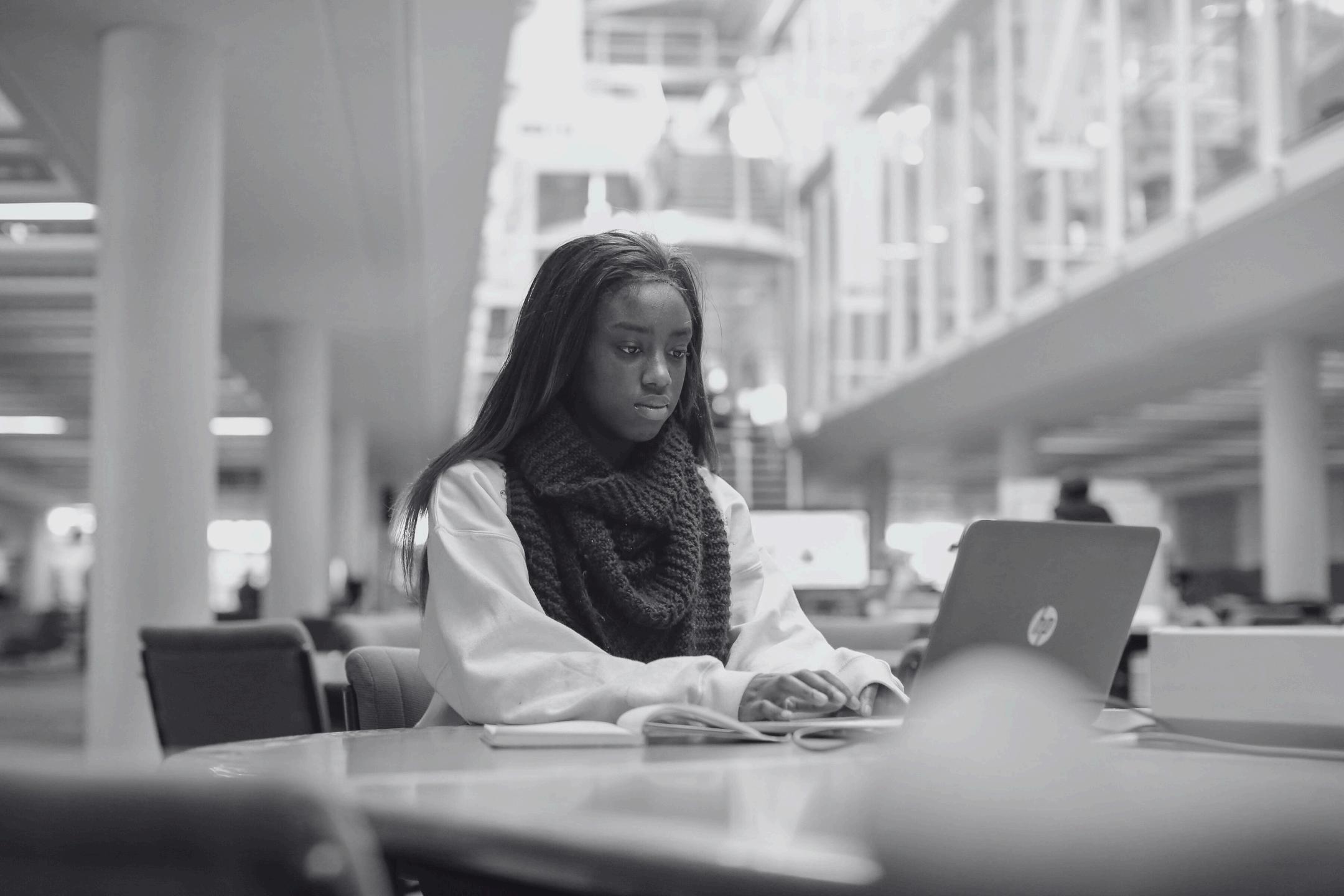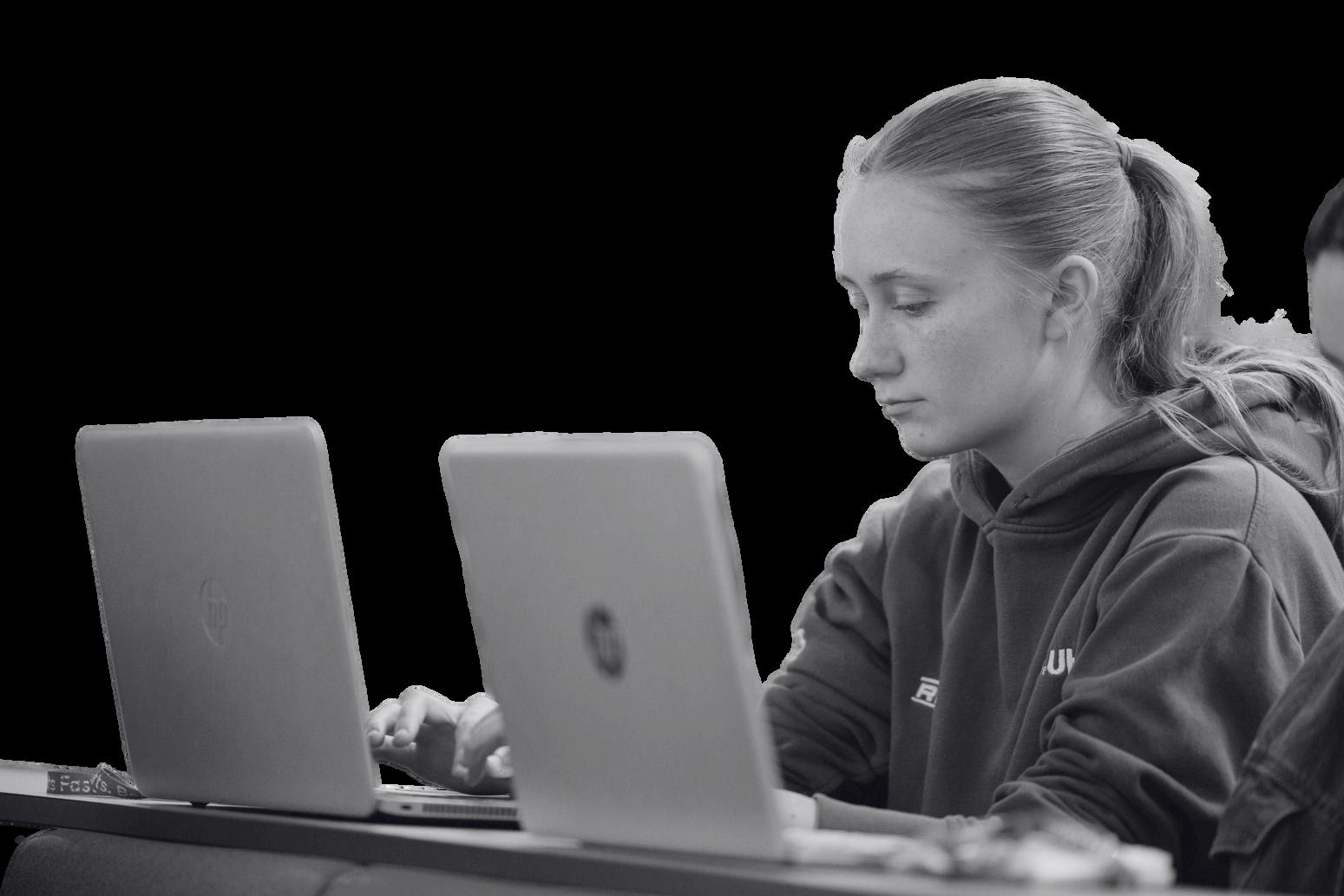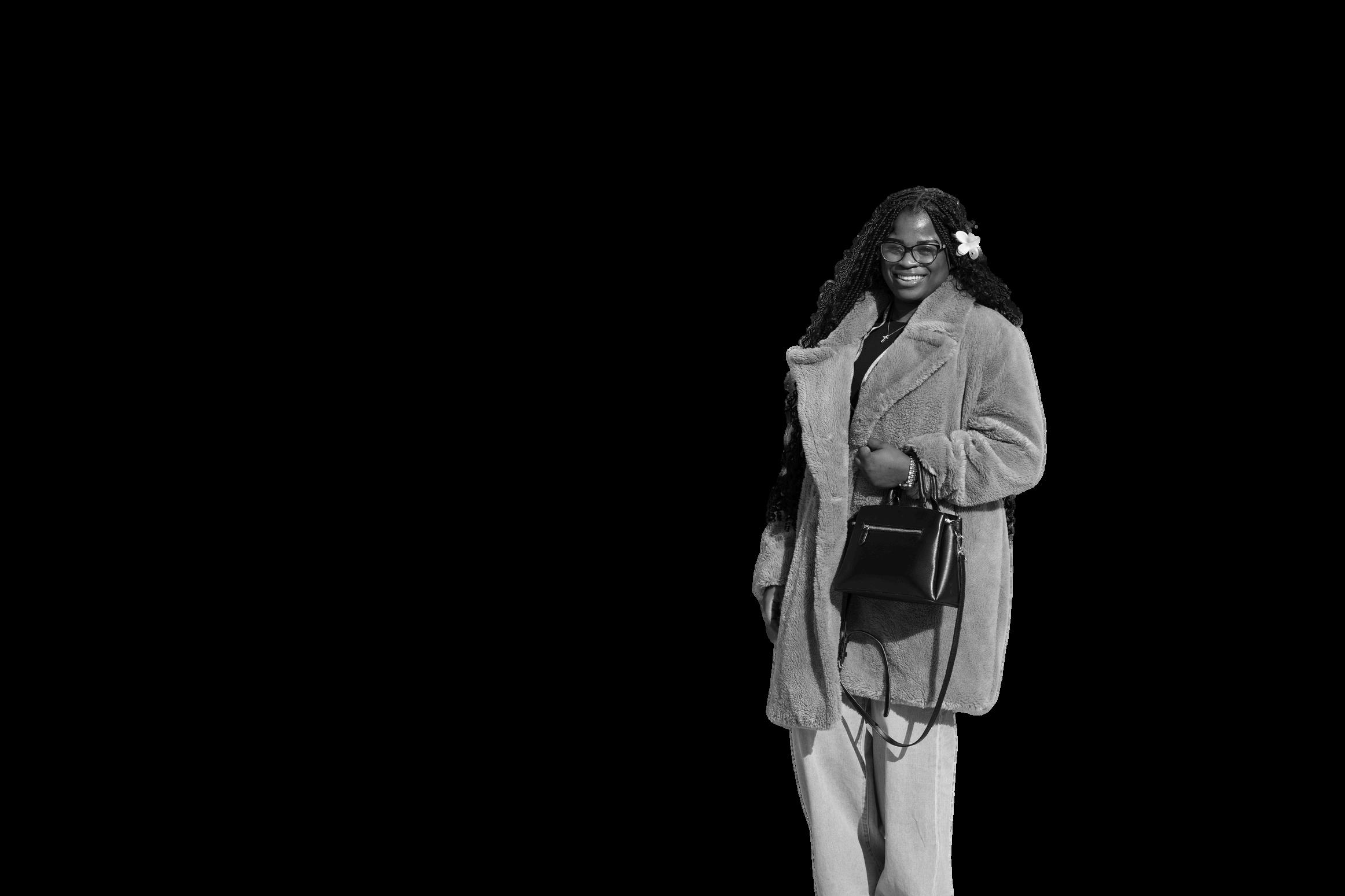BLENDED LEARNING SURVEY









TheBlendedLearningSurveywasconductedtoassessstudentperceptionsregarding thedefinition,strengths,weaknessesandpreferencesassociatedwithblended learningapproaches.Atotalof1,202responseswerecollectedbetweenNovember 2023andMarch2024.Thefeedbackgatheredthroughthissurveyprovidesinsights intostudents'acceptanceandperspectivesaboutthishybrideducationalmodel
Thesampleofrespondentscontainedrepresentativeproportions(i.e.within3%of currentUHpopulationdemographics*)ofpostgraduate,female,matureandBlack, Asian&MinorityEthnicstudents Thesamplecontainedlargerthanrepresentative proportionsofinternationalstudents,andsmallerthanrepresentativeproportionsof maleandWhiteethnicitystudents.


Thesurveysamplecontainedrepresentativeproportions(i.e.within3%ofcurrentUH populationdemographics*)ofstudentsfromtheSchoolsofBusiness,SPECS,Law& Education,andLife&MedicalSciences.Thesamplehadlowerthanrepresentative proportionsofstudentsfromtheSchoolofHealth&SocialWorkandSchoolof CreativeArts.


Campus(26/02/24) ationDemographics
Respondentswereaskedtowhatextenttheyagreedordisagreedwiththefollowing definition: Thisquestionreceivedatotalof1,193responses,with96.81%ofrespondentsagreeingwiththe definitionand3.18%ofrespondentsdisagreeingwiththedefinition.
‘BlendedLearningcombinesin-personclasseswithdigitalcontentdeliveryand additionalself-pacedactivitieslikequizzes,reading,polls,oronlinediscussions’
Respondentswereaskedtoselectfromalistofcommonoptions(includingspaceto providetheirownsuggestions)aboutwhatmakesthemostpositiveteachingexperiencefor them Respondentswereabletoselectasmanyoptionsastheywanted Thetopfive optionsselectedwere:
Accessibleonlinelearningresources(7162%) 1 Well-organisedlecturematerials(5726%) 2 In-classgroupactivities(5324%) 3 Interactiveclassdiscussions(52.09%)4. Opportunitiestoaskquestions(49.25%)5.
Factorssuchas“useoftechnology”(33.72%)and“incorporationofmultimedia”(24.87%) receivedmuchlowerlevelsofinterest.Figures3and4highlightthelimitedvariabilitybetween responseswhenbrokendownbydemographicandschool.
Respondentswerethenaskedtospecifytheadvantagesanddisadvantagesofin-person teachingsessions.Themostselectedadvantagesofin-personteachingsessionswerethe “levelofdiscussion/communicationwithlecturer”(46.89%),followedby“socialisation” (20.20%).Themostselecteddisadvantagesofin-personteachingsessionswere“more expensivetocommutetocampus”(40.74%)and“notveryflexible”(34.83%).
Respondentswerethenaskedtospecifytheadvantagesanddisadvantagesofdigitallive (online)teachingsessions.Themostselectedadvantagesofdigitallive(online)teaching sessionswere“flexible”(37.80%),followedby“abilitytore-watch”(19.36%)and“costeffective”(13.66%).Themostselecteddisadvantagesofdigitallive(online)teachingsessions were“technicalissues”(42.55%)and“isolation”(20.64%).
Figure3
Whatmakesapositiveteachingexperiencebydemographic
Whatmakesapositive teachingexperienceforyou?
Figure4
Whatmakesapositiveteachingexperiencebyschool
Respondentswerethenaskedtoselect,fromalistofcommonoptions,whatthebiggest challengestohavingabetterteachingexperiencewere Thetopfiveselectedoptionswere:
Whenbrokendownbyschool,respondentsfromtheSchoolsofBusiness(30.40%), Education(29.62%)andLife&MedicalSciences(28.77%)allselected“financialchallenges”as thebiggestchallengetohavingabetterteachingexperience.Whereasrespondentsfromthe SchoolofCreativeArts(35.55%)selected“workpressures”astheirbiggestchallenge,whilst respondentsfromHealth&SocialWork(25.88%)andSPECS(22.36%)selected“limited flexibility”.Figure5showsacomparisonforhowchallengeswereselectedbyrespondents fromeachoftheschools.
Challengestohavingabetter teachingexperience
Whenbrokendownbydemographic,undergraduate(21.85%),postgraduate(27.61%), international(27.46%),BAME(29.03%),18–25yearolds(22.99%)andmature(29.62%) studentsallselected“financialchallenges”asthebiggestchallengetothemhavingabetter teachingexperience.Incontrasttothis,whiteethnicitystudents(23.07%)selected“work pressures”asthebiggestchallengetothemhavingabetterteachingexperience.Figure6 showsacomparisonforhowchallengeswereselectedbyrespondentsfromeachofthe studentdemographics.
Respondentswereaskedtospecifytheiridealratioofdigital-liveandface-to-face teaching.From1,193responses,themostpreferred(digitallive:in-person)ratiowas50:50 (26.99%ofrespondents’preferredratio),withtheoverallpreferencebeingthatalarger proportionofteachingtakesplacein-person(43.75%ofrespondents’preference).However, only11.32%ofrespondentsstatedtheirpreferenceasbeing100%ofteachingtakingplaceinperson(0:100ratio).
The50:50(digitallive:in-person)ratiowasfavouredbyrespondentsfromallschools, excludingtheSchoolofCreativeArtswhichfavouredthe0:100,15:85and 25:75(digitallive:in-person)ratiosabovethe50:50(digitallive:in-person)ratio
Whengroupingtheratiosaccordingtowhethertheratioincludes(a)ahigherproportionof in-personteaching(ie 0:100,15:85,25:75digital-live:in-personratios)or(b)a50:50splitof onlinetoin-personteachingor(c)ahigherproportionofdigital-liveonlineteaching(i.e. 100:0,85:15,75:25digital-live:in-personratios);43.75%ofrespondentspreferredratios involvingahigherproportionofin-personteaching.26.99%ofrespondentspreferreda50:50 split,and29.25%ofrespondentspreferredahigherproportionofdigital-liveonlineteaching.
RatioPreferencebySchool
RespondentsfromtheSchoolofCreativeArts(CTA)weretheonlygrouptoprefer100%of teachingtotakeplacein-person However,thesamepercentageofpreferencewasshared withthe15:85and25:75teachingratios CTArespondentsalsohadthestrongestleanin preferencetowardsahigherproportionofin-personteaching,with5742%ofCTArespondents preferringratioscontainingahigherproportionofin-personteaching
Allschoolsplaced100%ofteachingtakingplaceonline(0:100digital:in-person)astheir lowestpreference,withtheSchoolofEducationalsoincludingthe85:15ratioastheirlowest preference.TheSchoolofHealth&SocialWork(HSK)hadthestrongestleaninpreference towardsahigherproportionofteachingtotakeplaceonline,with36.46%ofHSKrespondents preferringratioscontainingahigherproportionofonlineteaching.
RatioPreferenceby Demographic
Figure9
Digital-live:In-personRatiopreferencebydemographic
Figures8and9showthedifferenceinratiopreferencewhenbrokendownbyschoolor demographics.Significantlyhigherproportionsofundergraduatestudentspreferredtheratio involving100%teachingtakingplaceonline(p<0.05),whereassignificantlyhigherproportions ofpostgraduatestudentspreferredtheratioinvolving100%ofteachingtakingplacein-person (p<0.05).
Whenseparatingresponsesbyfeestatus(i.e.homeorinternationalfeestatus),theonly statisticallysignificantdifferencebetweenthetwodemographicgroupswasthat internationalstudentspreferredtheratioinvolvingteachingbeingdelivered100%online significantlyhigherthanhomestudents(p<0.05).
Whiteethnicityrespondentsshowedthestrongestpreferentialleaningtowardsahigher proportionofteachingbeingdeliveredin-person.AndeventhoughbothWhiteandBlack, Asian&MinorityEthnic(BAME)respondentsshowedpreferenceforahigherproportionofinpersonteaching,asignificantlyhigherproportionofWhiteethnicitystudentsshowed preferenceforthisteachingdelivery(p<0.05).AsignificantlyhigherproportionofBlack,Asian &MinorityEthnicstudentsshowedpreferenceforahigherproportionofteachingtotakeplace online(31.94%),whencomparedtotheproportionofWhiteethnicitystudentspreferringthis teachingratio(16.80%).
Respondentsagedbetween18-25yearsshowedasignificantlyhigherpreferenceforahigher proportionofteachingtotakeplacein-person,incomparisontorespondentsaged26+years Respondentsaged26+yearsshowedasignificantlyhigherpreferenceforahigherproportion ofonlineteaching,thoughitwasnottheiroverallpreference
Overall,themajorityofstudentssurveyedagreedwiththeblendedlearningdefinitionwhich wasprovidedbytheUniversity.Theyplacegreatvalueonwellorganisedlecturesand supportingonlinelearningmaterials Studentssurveyedappreciatetheflexibilitythatonline (orrecordedandsaved)lecturescanoffer,enablingstudentstheflexibilitytofittheirstudies intotheirlives–whichofteninvolveworkorpersonalcommitments(suchascare responsibilities) Onlinelearningalsooffersundoubtedfinancialsavingsforstudents, particularlyforthosewhocommute
However,studentssurveyedalsovaluethesocialopportunitiesofferedbyin-person teaching–alongsidetheopportunitytodeepentheirlearningandunderstandingthrough opportunitiesfordiscussionwithacademicstaffandpeers
Itisclearfromthedigital-live:in-personteachingratiopreferencessharedbyrespondents that,eventhoughthestand-alonepreferredratiois50:50(digital-live:in-person);43.75%of respondentspreferratiosinfavourofhigherproportionsofteachingtakingplacein-person, comparedto29.25%ofrespondentspreferringratioswherebyhigherproportionsofteaching takeplaceonline.
Therespondentswiththehighestlevelsofpreferenceforhigherproportionsofteachingto takeplaceonlinewerestudentsfromtheSchoolofHealth&SocialWork(HSK),studentsaged 26years+andstudentsfromBlack Asian&MinorityEthnic(BAME)backgrounds


ReviewengagementDatatoIdentifyWhereAdditionalSupportis Needed
Fortheuniversitytoreviewitsownstudentengagementdata,toseeifengagement ratesacrosstheschoolsanddemographicsalignwiththesefindings;andtoexplore whetherenhancedsupportisrequiredwithintheareaswhichhavespecifiedahigher preferenceforlesson-campusengagement
Inresponsetostudentssurveyedhighlightingthatoneofthebiggestadvantagesof onlinelearningistheflexibilityandthecost-effectivenessitoffers,itisrecommended thattheuniversityconsiderseitherincreasingtheproportionofonlinelearning opportunitiesavailabletostudents–whilstmaintaining,overall,ahigherproportionof learningtakingplacein-person(thusreflectingtheoverallpreferenceofstudents surveyed).Oralternatively,theuniversityconsiderstheconsolidationofon-campus teachingtime;condensingtimetablesasmuchaspossibletoreducethefinancial burdenoftraveltocampusandtomaximisethetimespentoncampus.
Inresponsetostudentssurveyedhighlightingthevalueofthesocialexperienceof comingtocampus,fortheuniversitytoexplorehowtimespentoncampuscanbemade evenmorebeneficialandrewardingforstudents,byenhancingtheofferandavailability ofpersonaltutoringsupport,academicskillssupportandcourse-specificextracurricular activities. 1. 2. 3. 4. 5. 13
Inresponsetostudentssurveyedhighlightingthevalueofclassdiscussionand opportunitiestoaskquestionsduringteachingsessions,itisrecommendedthatthe universityexploreshowtheseinteractiveopportunitiescanbeofferedandutilisedmore withinonlineteachingsessions
Inresponseto“financialchallenges”beingselectedasthebiggestchallengetohavinga betterteachingexperience,andin-lightoftheongoingimpactofthe“costofliving crisis”,itisrecommendedthattheuniversitycontinuestodevelopnon-repayable financialsupportfundswhichareavailabletoallstudents,withaquickturn-aroundfor studentapplications.

